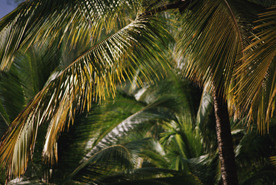
Conservation Education & Awareness: With over 266 bird species (including eight of global concern) and endangered mammals like Diana monkeys and forest elephants, Kakum is a living classroom for biodiversity and climate resilience
Cultural re‑connection & Diaspora engagement: As part of Ghana’s initiatives like Year of Return and Beyond the Return, Kakum offers a bridge for people of African descent to connect meaningfully with ancestral lands and natural heritage,
Eco-tourism leadership: The park remains Ghana’s most visited natural attraction, guided by public-private partnerships between the Wildlife Department, Ghana Heritage Conservation Trust (GHCT), and international bodies—showcasing how sustainable tourism can thrive in partnership with local communities
Youth & Learning: Regular school field trips, environmental awareness programs, and educational multimedia exhibitions nurture the next generation’s respect for conservation and climate action

One of these species of concern is the white-breasted guineafowl. Nine species of hornbill and the African grey parrot have been recorded.
It is very rich in butterflies as well, and a new species was discovered in 1993. As of 2012, the densest population of forest elephants in Ghana is located in Kakum.
It is also an Important Bird Area recognized by the Bird Life International with the bird area fully overlapping the park area. The bird inventory confirmed 266 species in the park, including eight species of global conservation concern.
As of 2012, the densest population of forest elephants in Ghana is located in Kakum.
The Kakum forest turns more to a kind of of a jungle experience. The canopy walkway is up to 30 m above the forest floor and within sight of the tallest tree of the forest where elephants can sometimes be seen scrounging for fallen fruit.
There are six Tree Top platforms that reach the height of 30 meters above the forest floor. From the tree tops, visitors experience a unique and spectacular view of the rainforest ecosystem and have the opportunity to see flora and fauna, which could never be viewed from the ground.